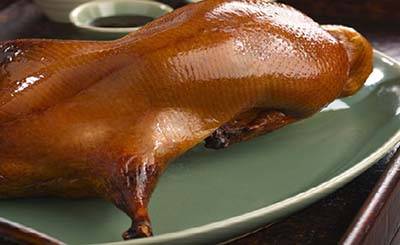 Food, fireworks, presents for every guest-Chinese New Year beats Valentine’s Day hands down.
Food, fireworks, presents for every guest-Chinese New Year beats Valentine’s Day hands down.
In college, I worked for two florists at the same time, which was not a problem until Valentine’s Day. I went to work at 7:30 a.m. on February 13 where I cleaned and dethorned hundreds of roses. At 5 p.m. I left to go clean and arrange hundreds more at the second florist. Because it was above 32 degrees, we didn’t have to bag the arrangements. So, somewhere around 5:30 a.m., I got to go to my co-worker’s apartment and grab 90 minutes of sleep on her couch. I arrived back at the first florist only to discover that someone had not shown up and I was going to be “runner,” literally running flowers from the delivery van to the recipients’ doors. I returned home somewhere around 9 p.m.
Sadder than the hours that florists keep at Valentine’s Day are the working conditions of those who harvest the flowers, which are about as grim as those of cacao harvesters, but certainly better than those of African diamond miners. At its core, the modern Valentine’s Day is a pretty ugly holiday. That so many people insist on having unreal expectations for it only compounds the ugliness.
In fact, my favorite Valentine’s Day was one my husband and I spent shopping for laser paper for a printer he gave me for my birthday the day before. That night, I saw dozens of people calmly shopping for office supplies and not coming unglued because they received yellow roses instead of red. It was a breath of fresh air.
And so it is that I am always happy when Chinese New Year eclipses Valentine’s Day as it does this year. An entire week devoted to eating and visiting with family and friends, what’s not to love?
Okay, Peking Duck. Traditionally, Peking ducks are raised free-range for the first two thirds of their lives. For their last weeks, they are caged and force fed up to four times a day. Hence the alternative name for this dish: Peking stuffed duck.
In the U.S., force feeding is rarely the case and it doesn’t have to be the case at all in C-U because Common Ground Food Coop carries free-range ducks from Moore Family Farm in Watseka.
Though it has several steps, Peking duck is not a hard dish to make at home. It just requires prepping the bird two days before you are going to serve it. The traditional method involves hanging the duck outside your kitchen window for hours at a time, which doesn’t work so well in towns with plenty of raccoons and opossums like ours. So, I’ve always preferred the recipe in The New Basics Cookbook by Julee Rosso and Sheila Lukins which allows you to use a refrigerator for this step.
In a nutshell, you remove any excess fat from the bird. However, with a free-range bird, there isn’t much to remove. You then blanch and tighten the skin with boiling water. This helps ensure a crisp skin, makes the duck prettier, and allows you to easily remove any remaining pin feathers. Next, you rub the bird with sherry and kosher salt inside and out to draw out moisture and concentrate its flavor as it sits overnight in the fridge. The next day you brush it with honey-not exactly rocket science, because that is reserved for, well, rockets which make up the holiday’s huge fireworks displays.
The only thing remotely tricky is that you will want to shorten the cooking times on the New Basics recipe as the Moore’s ducks are smaller and free-ranging. For the covered baking, allow 20 to 30 minutes; for the uncovered baking allow 15 to 20 minutes; and for the final crisping/browning allow 5 to 10 minutes. Pricking the skin prior to the uncovered cooking allows any fat to drain. The bird should reach an internal temperature of 160 degrees F prior to the final crisping and 165 when it is done.
Skip the cucumbers called for as an accompaniment. Instead, opt for something more seasonal. Julienne or coarsely grate three carrots and an equivalent amount of peeled daikon. Dress the mixture with equal amounts of water, sugar, and rice vinegar. The crepe-like scallion pancakes that follow the duck recipe are not authentic, but are quite good. Be sure to let the batter rest for an hour before cooking them. This recipe from Fine Cooking and this one from the Asia Society yield the Mandarin pancakes more commonly served with Peking duck.
You also may want to warm the hoisin sauce a bit before serving it. You can do this in a small sauce pan or the traditional way by swirling it with a bit of oil in a wok.
Happy New Year!








